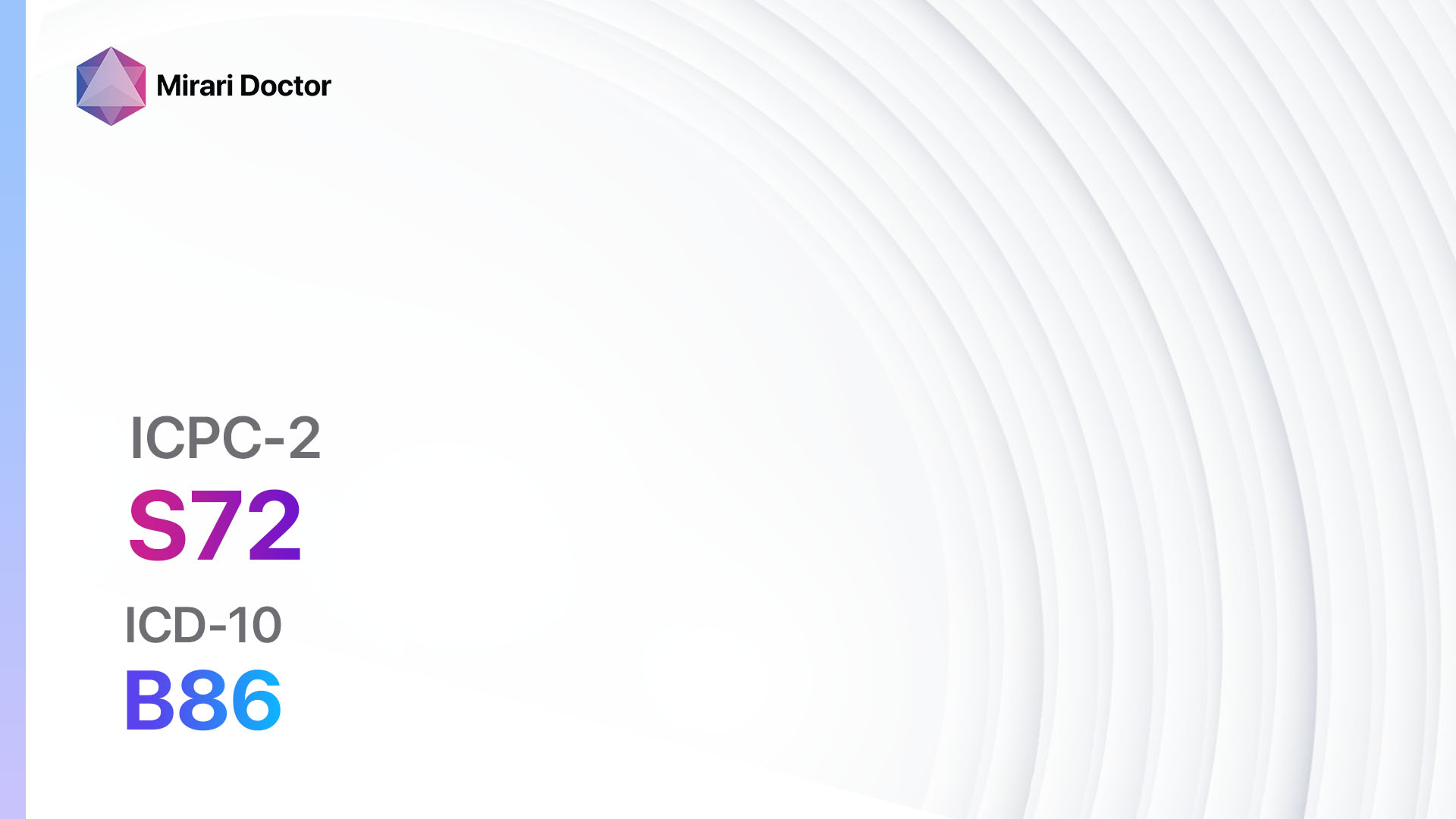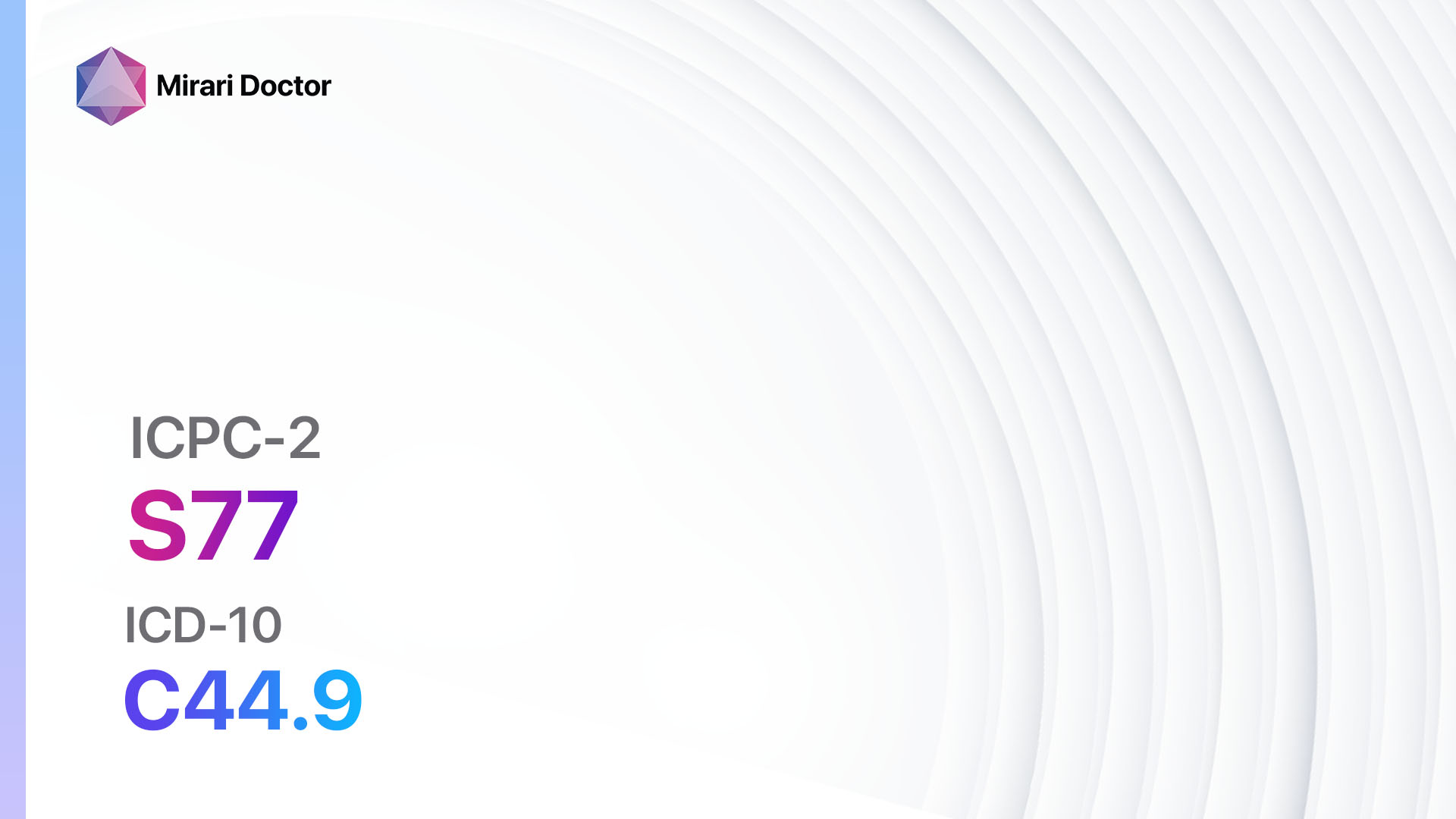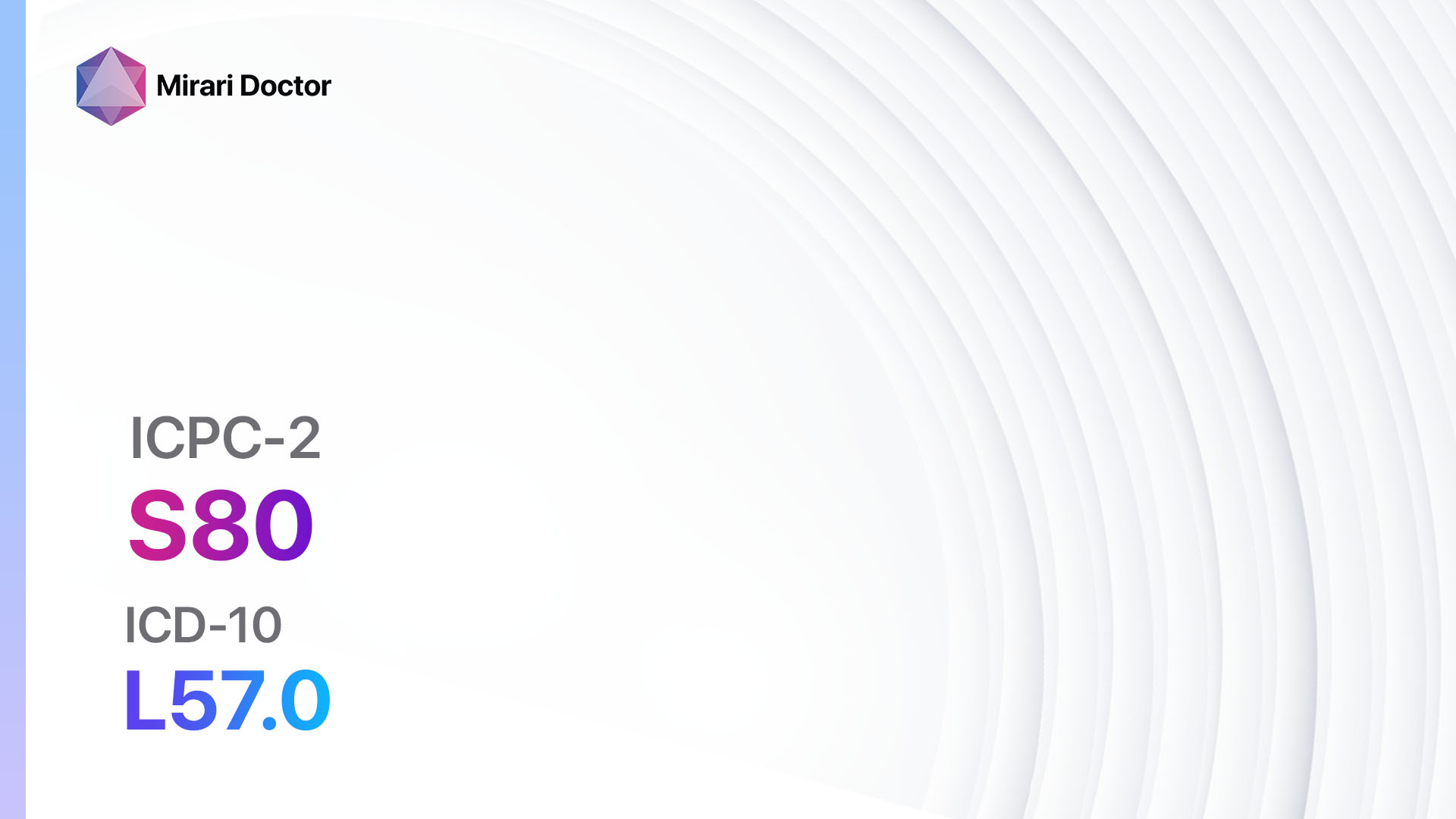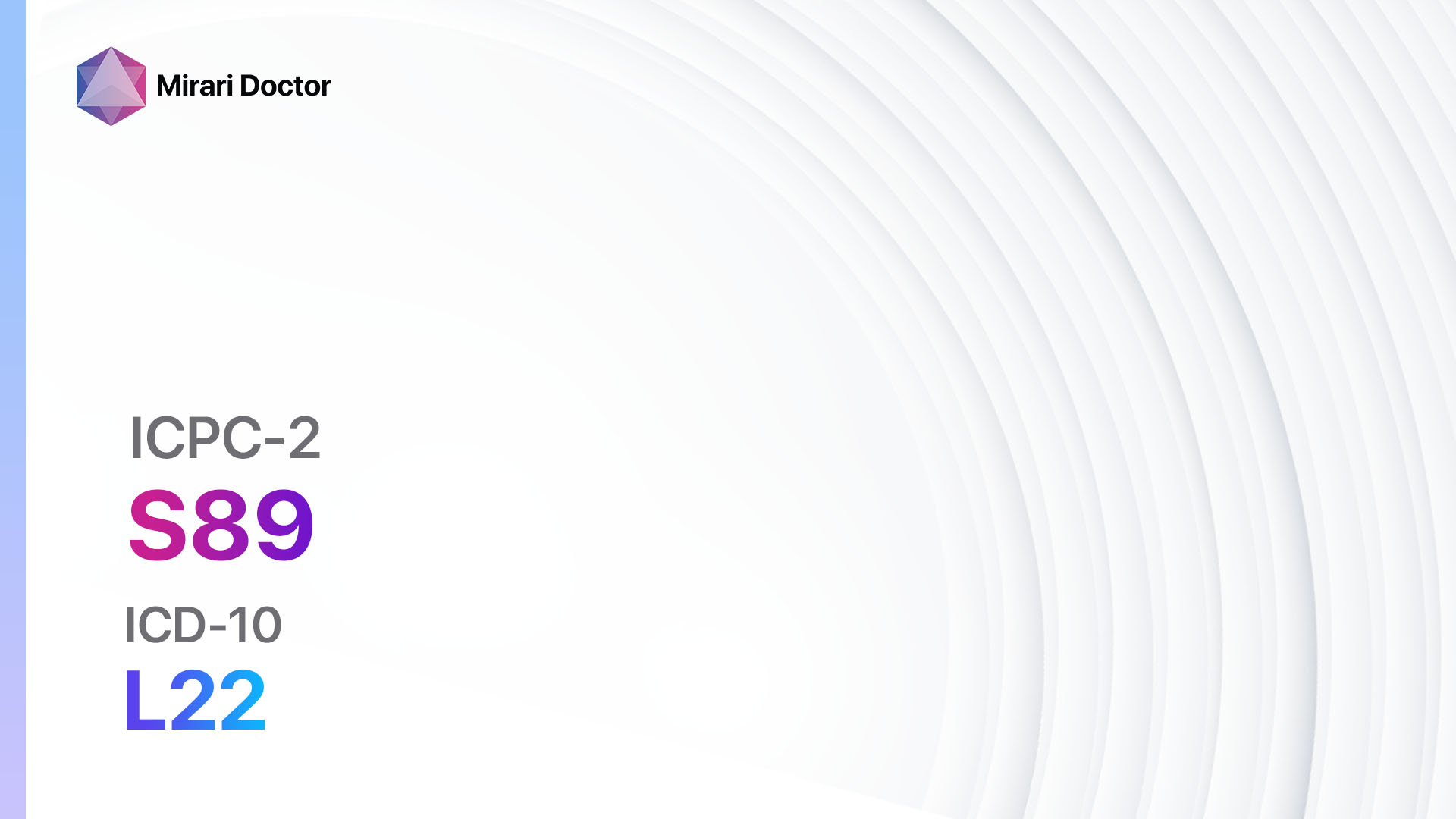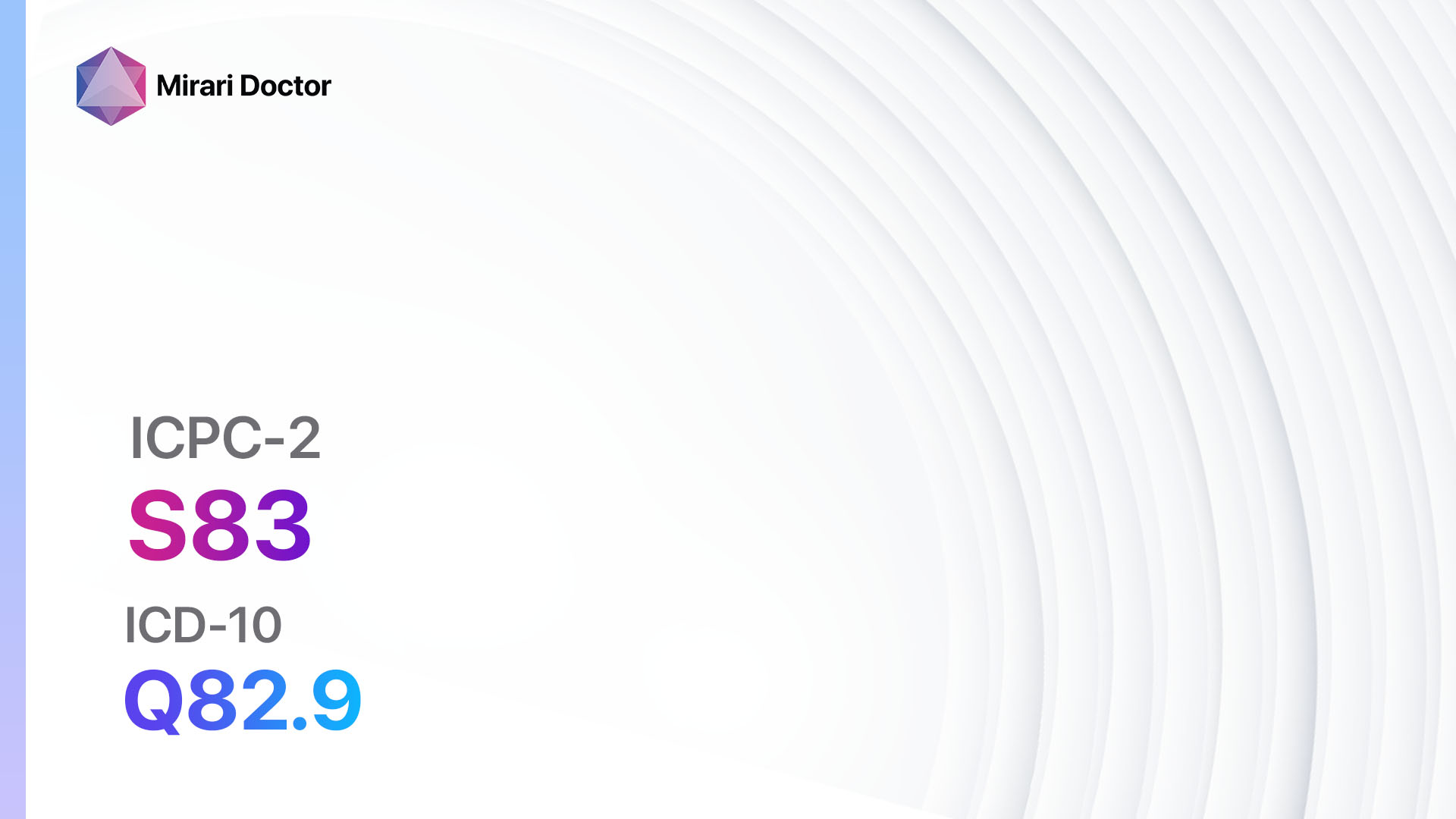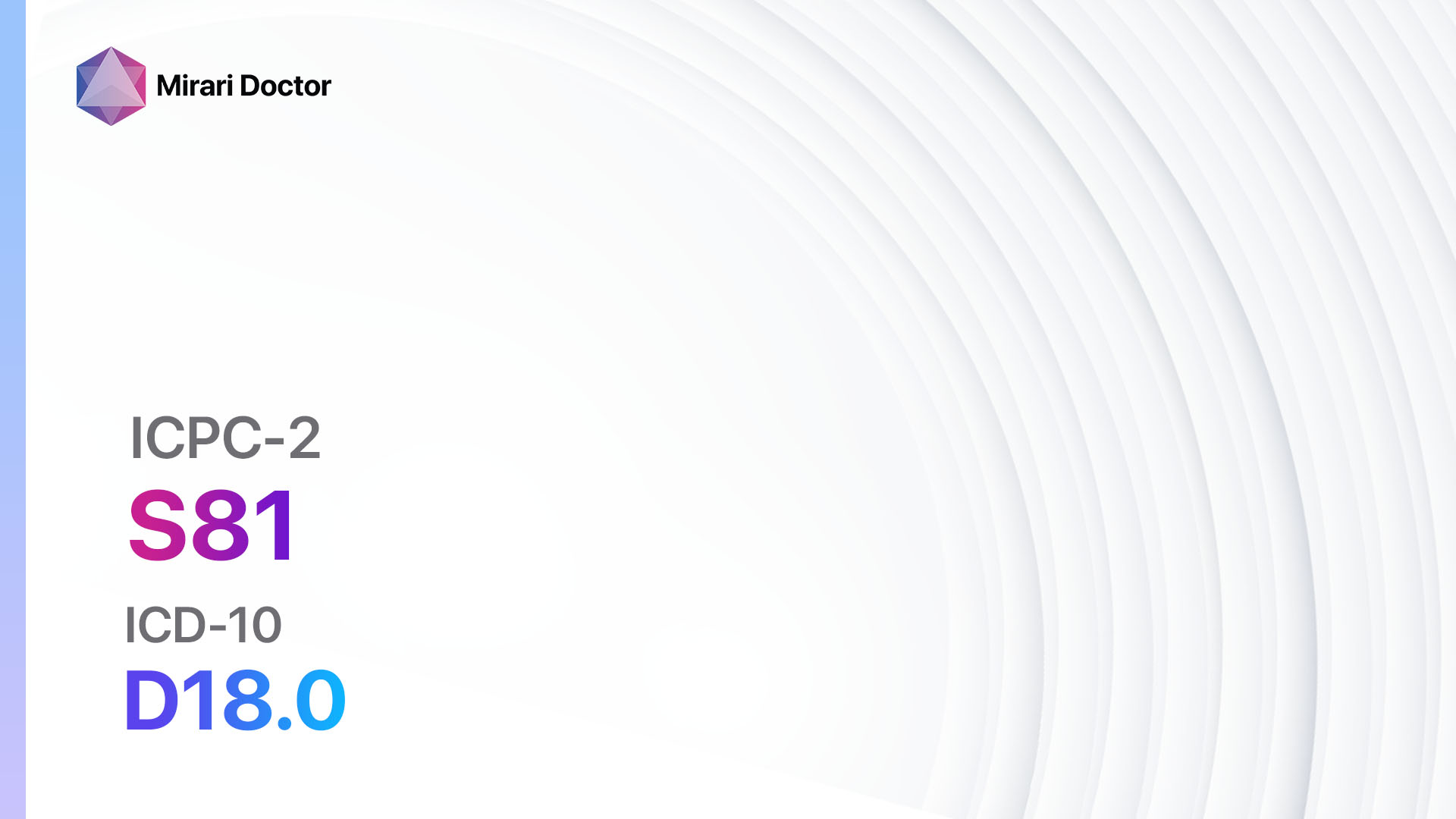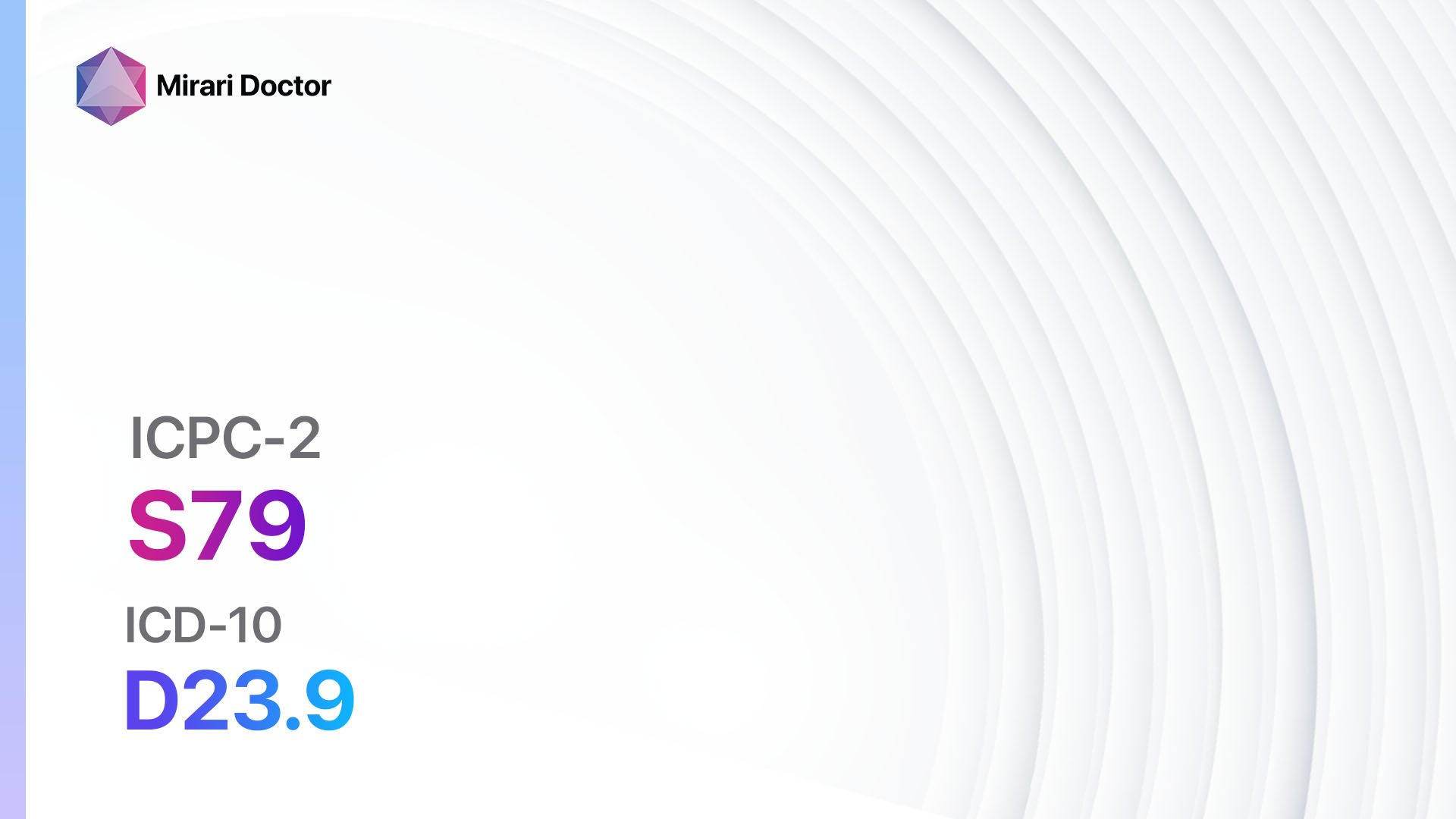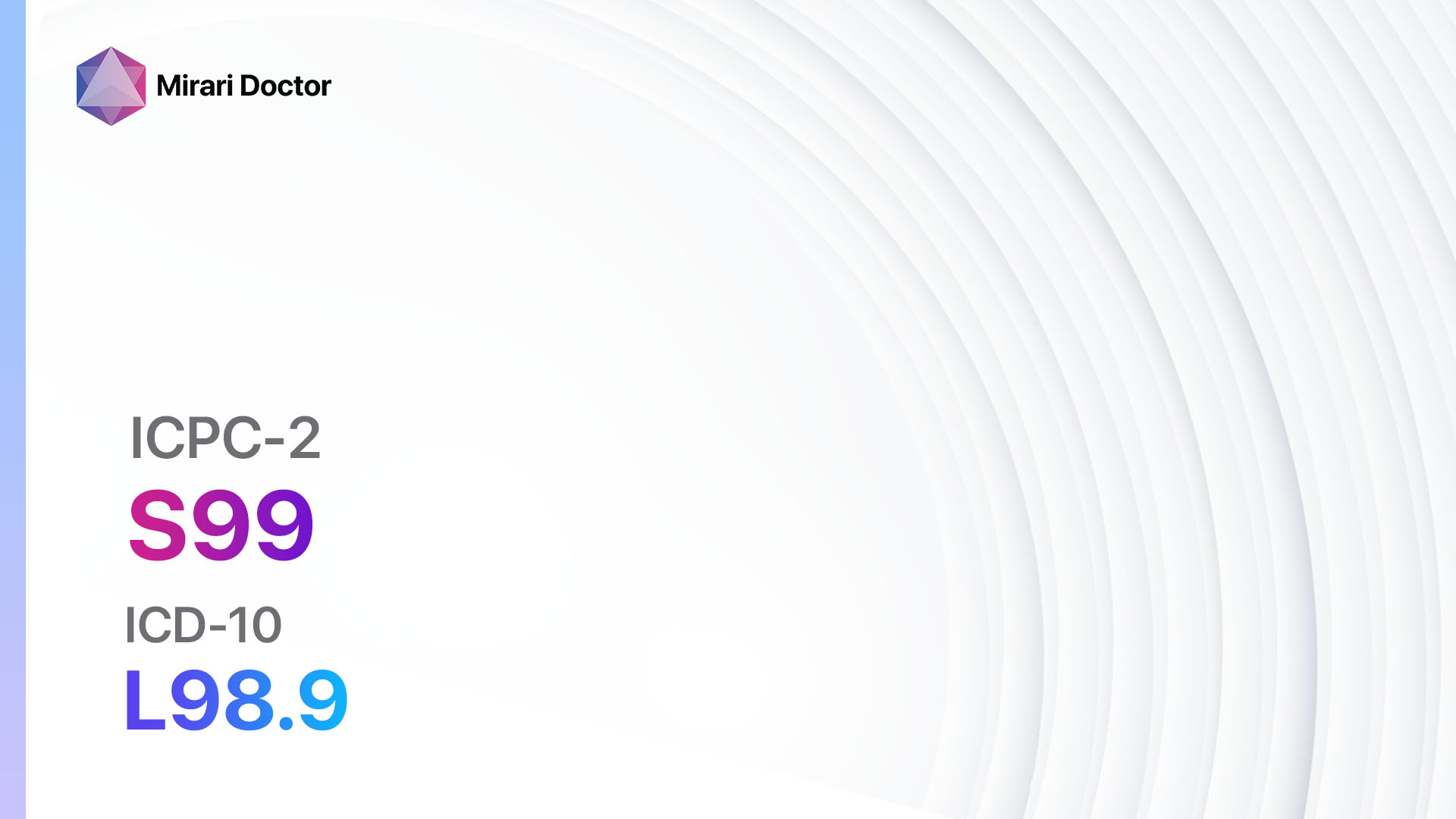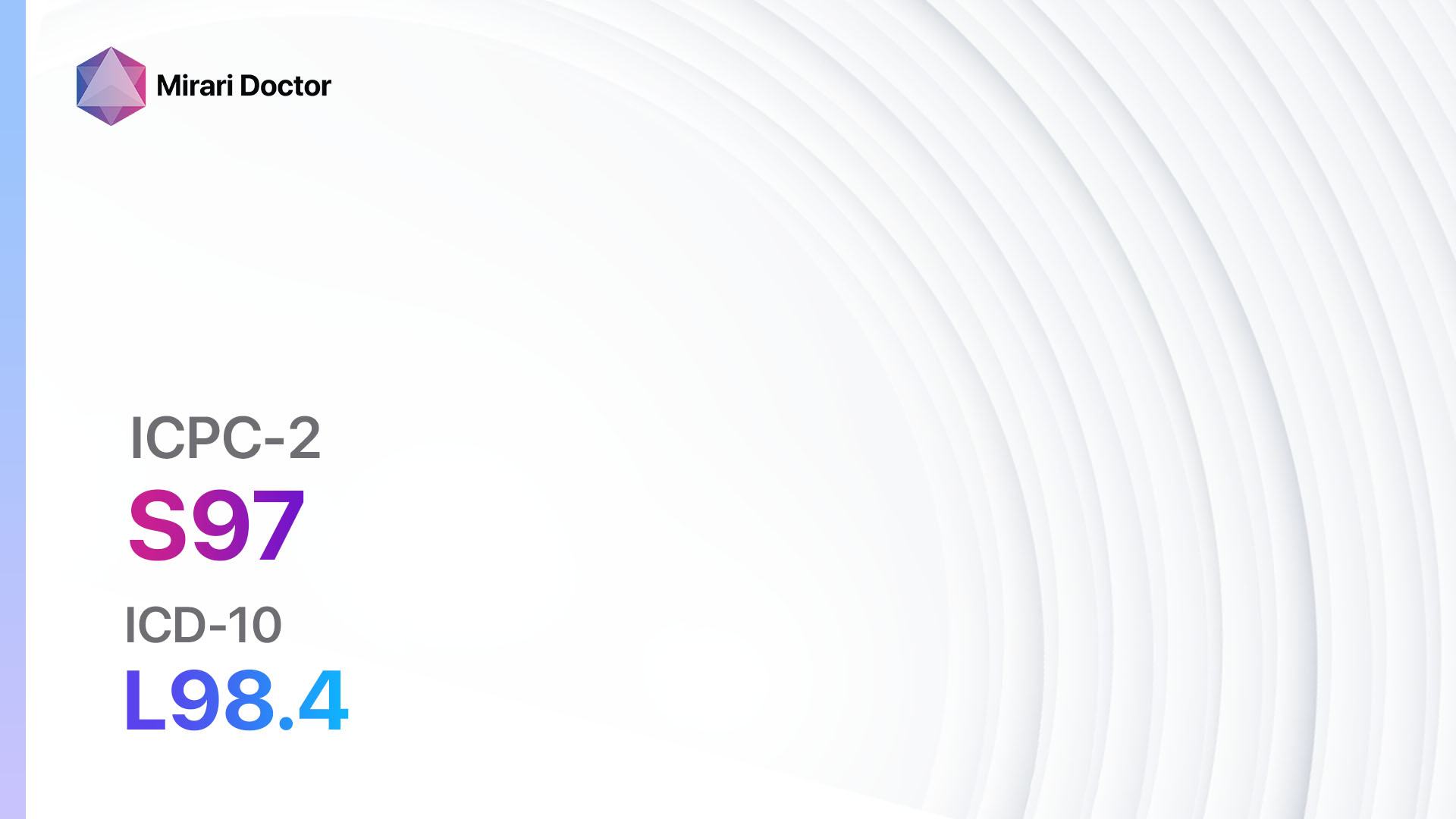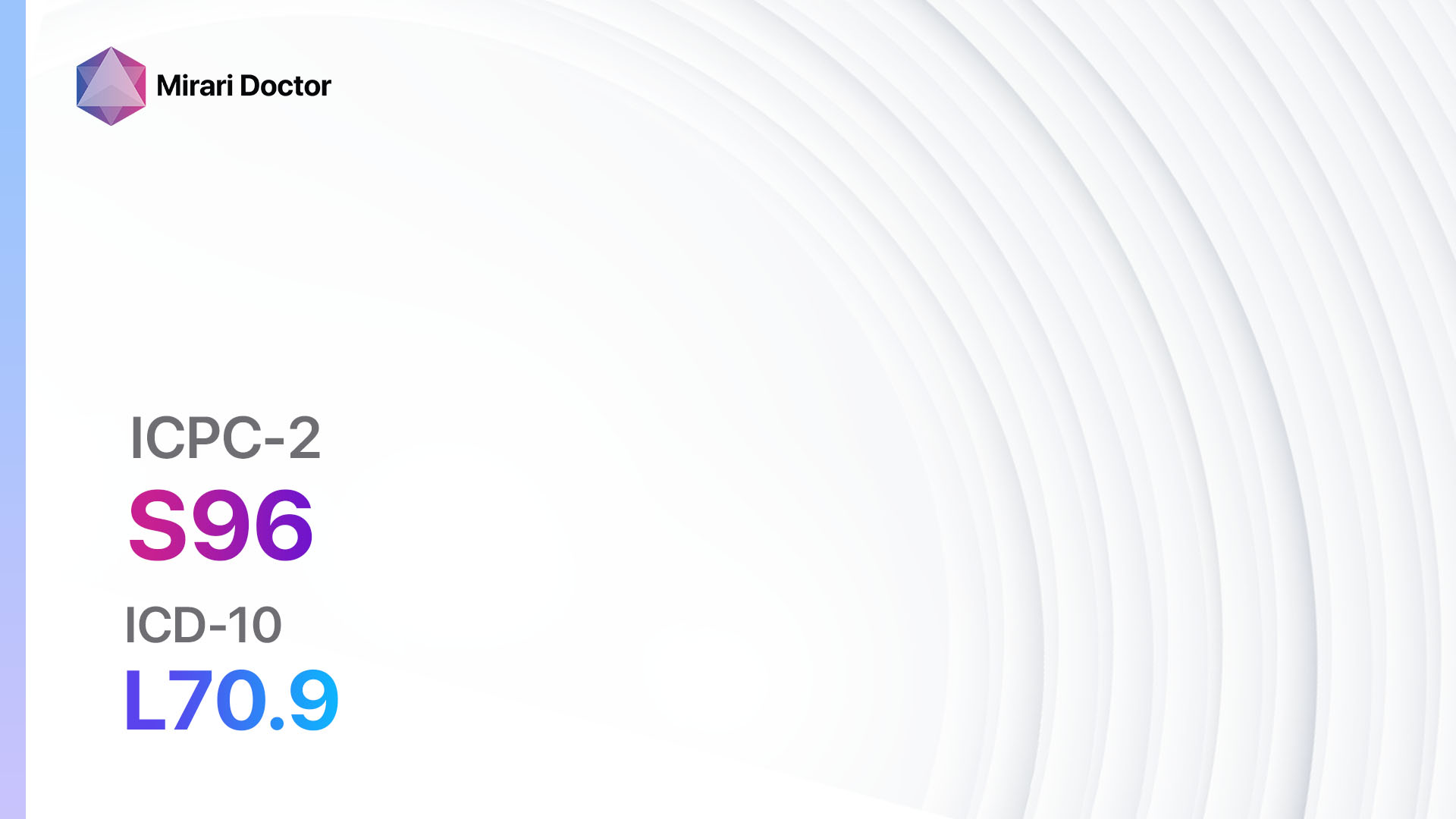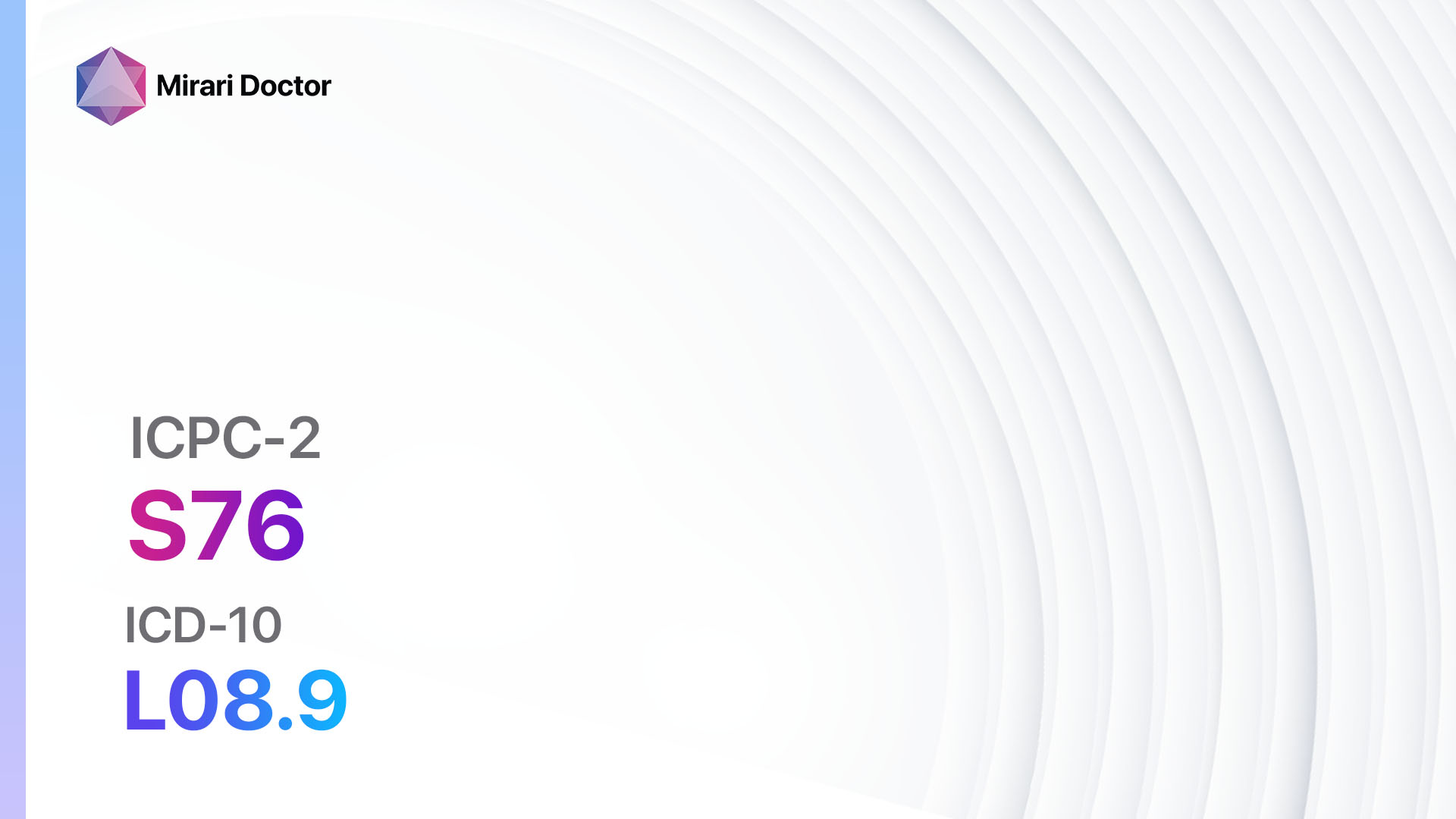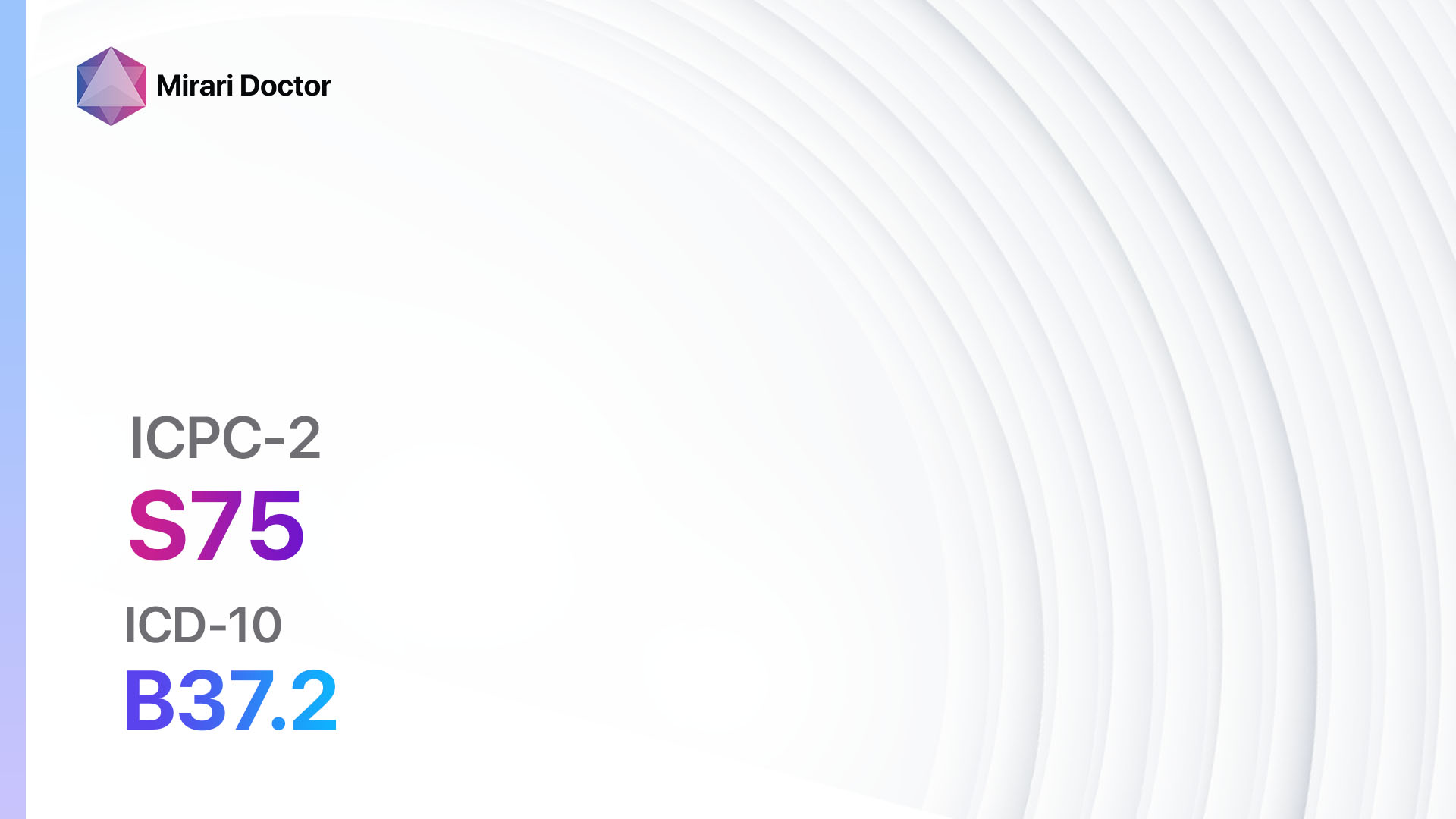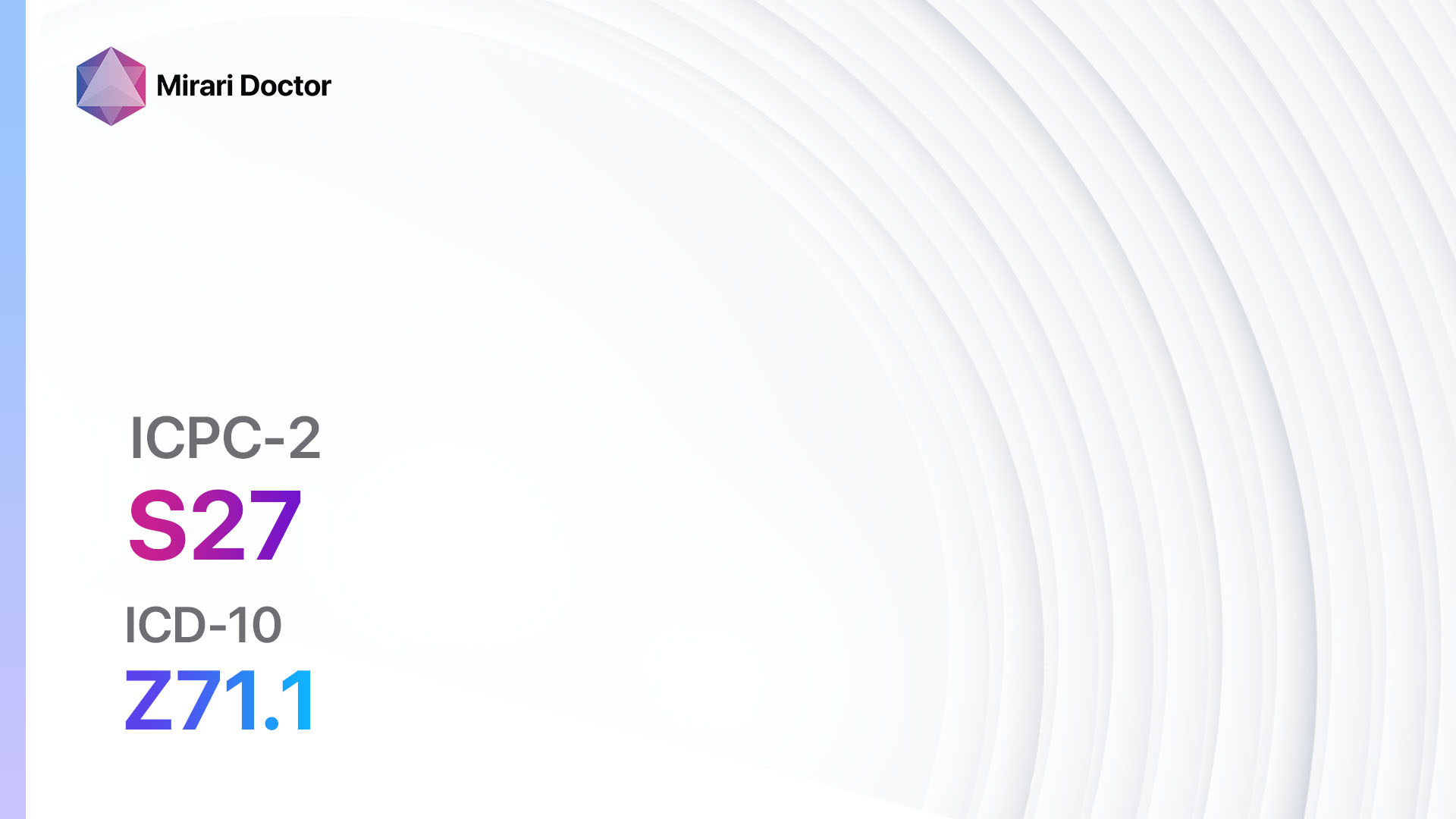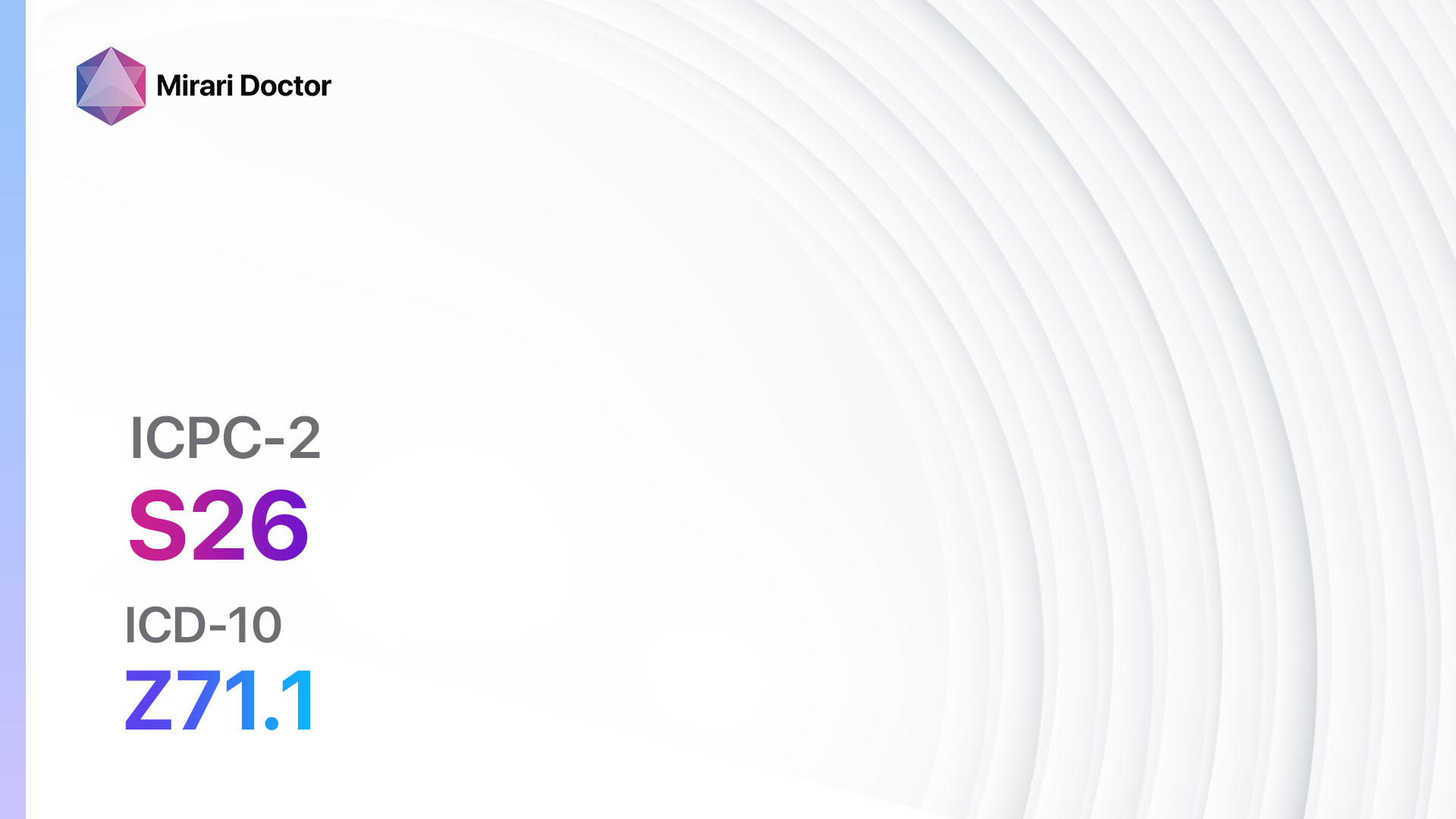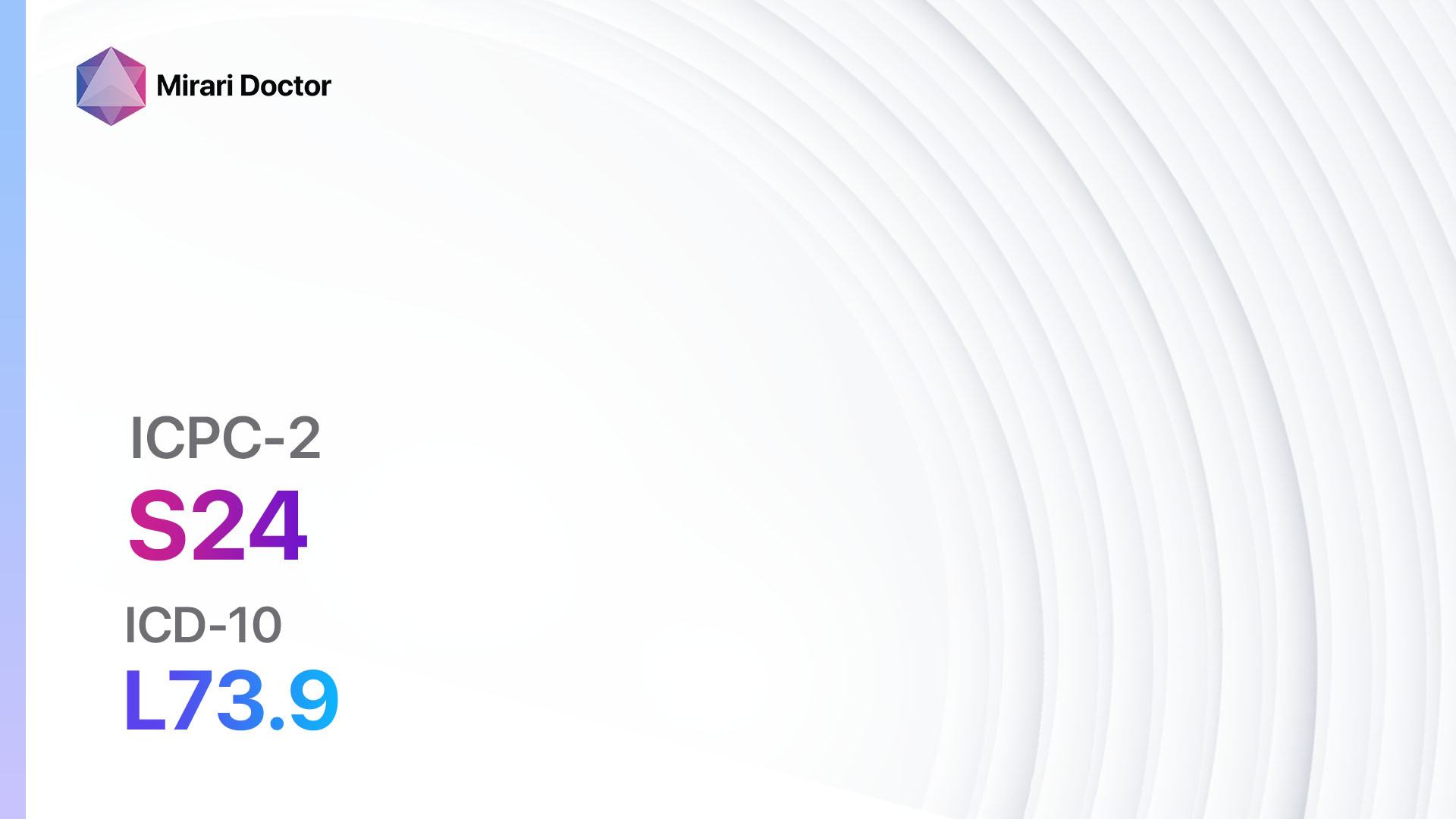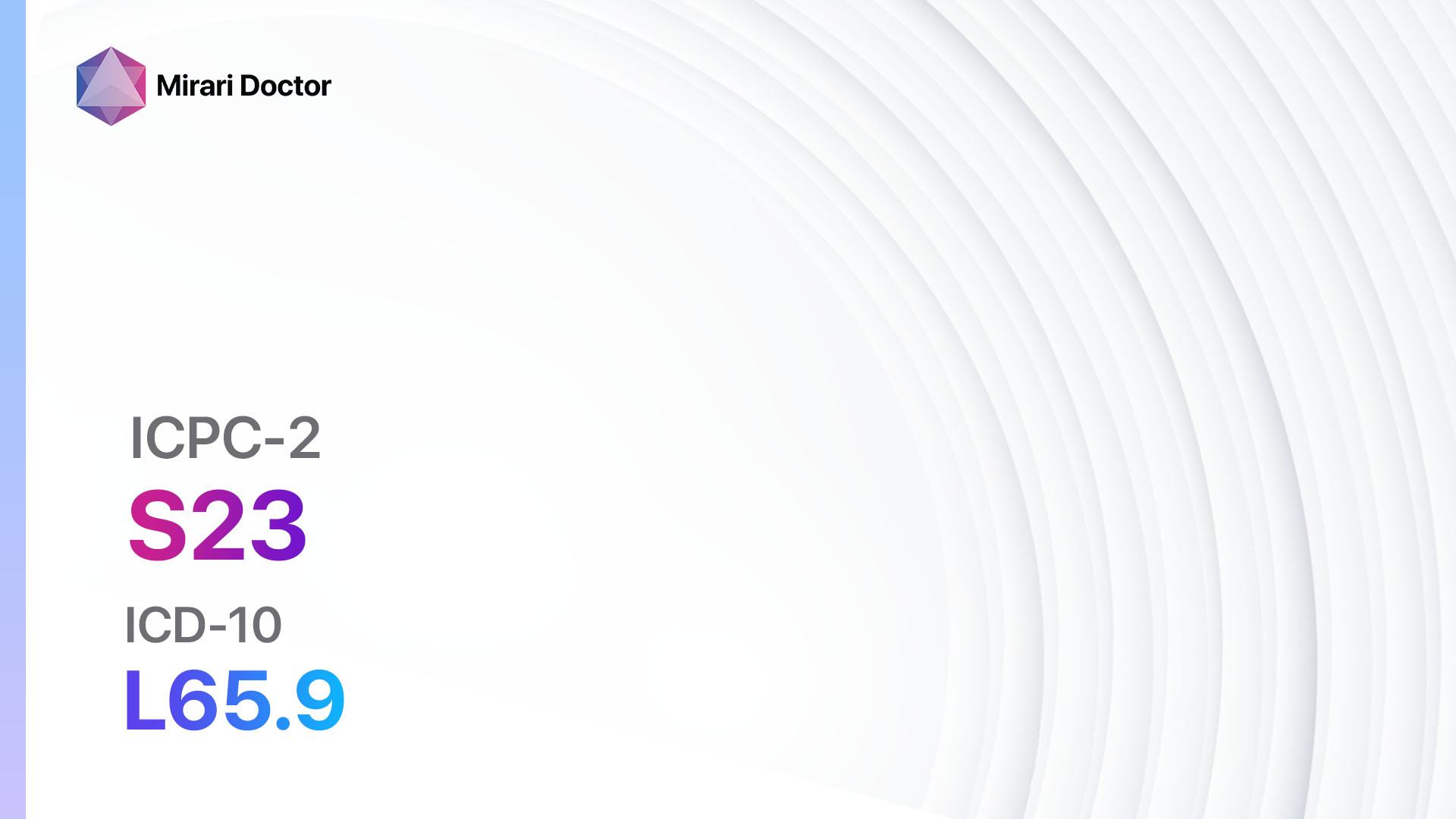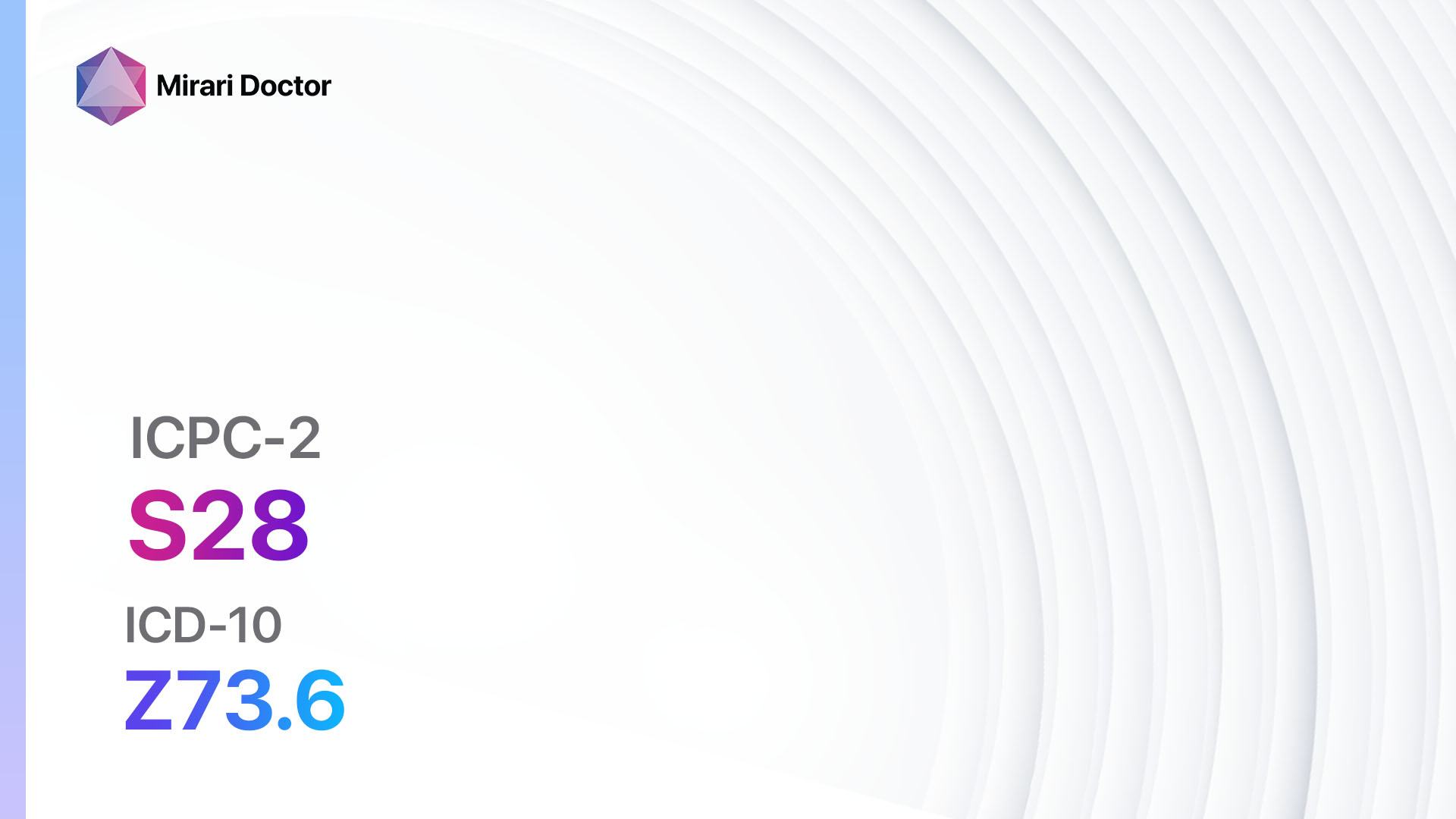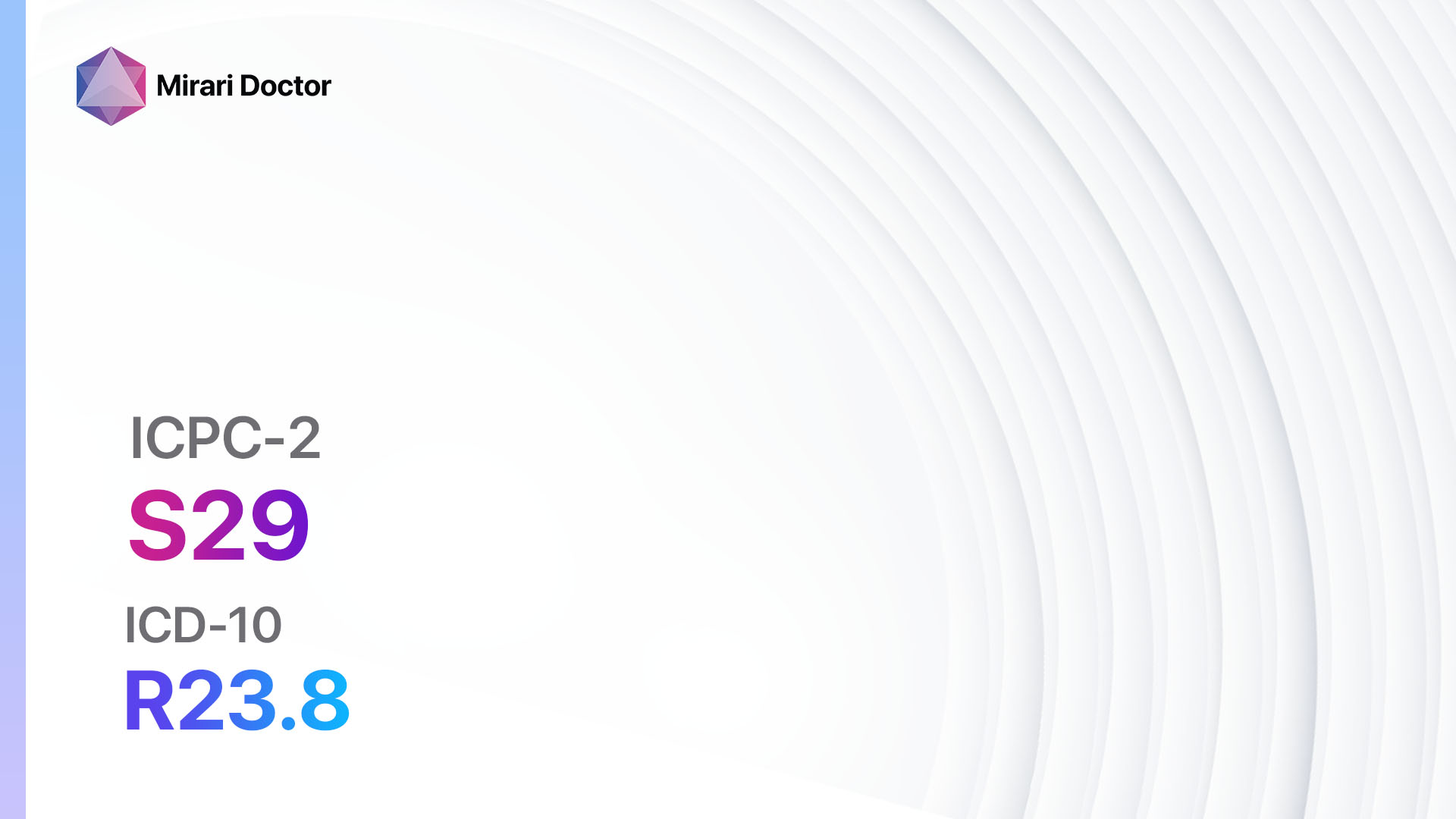
Introduction
Skin symptoms or complaints that do not fit into specific categories can be challenging to diagnose and treat. This guide aims to provide healthcare professionals with a step-by-step approach to evaluating and managing patients with skin symptoms or complaints that do not fall into other defined categories. By following this guide, healthcare professionals can ensure a comprehensive evaluation and appropriate management of these patients.
Codes
- ICPC-2 Code: S29 Skin symptom/complaint other[1]
- ICD-10 Code: R23.8 Other and unspecified skin changes[2]
Symptoms
- Itching: Patients may complain of generalized or localized itching on the skin.
- Rash: Patients may present with a rash that can vary in appearance, such as redness, bumps, blisters, or scaling.
- Discoloration: Patients may notice changes in the color of their skin, such as darkening or lightening.
- Swelling: Some patients may experience swelling of the skin or underlying tissues.
- Pain or discomfort: Patients may report pain or discomfort in the affected area.
- Dryness: Patients may have dry or flaky skin.
- Lesions or sores: Patients may have open sores, ulcers, or lesions on their skin[3].
Causes
- Allergic reactions: Skin symptoms can be caused by allergic reactions to certain substances, such as medications, cosmetics, or environmental triggers.
- Infections: Bacterial, viral, or fungal infections can lead to skin symptoms.
- Autoimmune conditions: Some autoimmune conditions, such as lupus or psoriasis, can manifest with skin symptoms.
- Dermatitis: Contact dermatitis or atopic dermatitis can cause skin symptoms.
- Environmental factors: Exposure to certain environmental factors, such as extreme temperatures or chemicals, can lead to skin symptoms.
- Medications: Some medications can cause skin reactions or symptoms as a side effect.
- Systemic diseases: Certain systemic diseases, such as liver or kidney disease, can present with skin symptoms[4].
Diagnostic Steps
Medical History
- Gather information about the patient’s symptoms, including the duration, progression, and any triggers or alleviating factors.
- Ask about any previous episodes or similar symptoms.
- Inquire about the patient’s medical history, including any known allergies, autoimmune conditions, or systemic diseases.
- Determine if the patient has been exposed to any potential irritants or allergens.
- Assess the patient’s family history for any skin conditions or allergies[5].
Physical Examination
- Perform a thorough examination of the skin, including the affected area and any other areas of concern.
- Look for any specific signs or findings, such as redness, swelling, lesions, or discoloration.
- Palpate the skin to assess for texture, temperature, and tenderness.
- Check for any associated symptoms, such as lymphadenopathy or fever[6].
Determine Severity
- Classify the severity of the skin symptoms based on the extent of involvement, impact on daily activities, and associated symptoms.
- Mild: Minimal involvement, minimal impact on daily activities.
- Moderate: Moderate involvement, moderate impact on daily activities.
- Severe: Extensive involvement, significant impact on daily activities[7].
Laboratory Tests
- Complete blood count (CBC): To assess for any underlying systemic conditions or infections.
- Erythrocyte sedimentation rate (ESR) or C-reactive protein (CRP): To evaluate for inflammation.
- Allergy testing: If an allergic reaction is suspected, allergy testing may be performed to identify specific triggers.
- Skin biopsy: In some cases, a skin biopsy may be necessary to confirm the diagnosis or rule out other conditions[8].
Diagnostic Imaging
- In most cases, diagnostic imaging is not necessary for the evaluation of skin symptoms or complaints. However, if there is suspicion of an underlying systemic condition or infection, imaging modalities such as X-rays, ultrasound, CT scans, or MRIs may be ordered[9].
Other Tests
- Patch testing: If contact dermatitis is suspected, patch testing may be performed to identify specific allergens.
- Skin scraping or culture: If a fungal or bacterial infection is suspected, a skin scraping or culture may be obtained to identify the causative organism.
- Autoimmune markers: In cases where an autoimmune condition is suspected, specific autoimmune markers may be tested to aid in the diagnosis[10].
Follow-up and Patient Education
- Schedule a follow-up appointment to monitor the patient’s progress and adjust the treatment plan if necessary.
- Provide patient education on proper skincare, avoiding triggers or irritants, and the importance of adherence to prescribed medications or treatments.
- Encourage the patient to report any worsening symptoms or new concerns.
Possible Interventions
Traditional Interventions
Medications:
Top 5 drugs for skin symptoms/complaints other:
- Topical corticosteroids (e.g., Hydrocortisone, Betamethasone):
- Cost: Generic versions can range from $5-$30 per tube.
- Contraindications: Active bacterial or fungal infection, hypersensitivity to corticosteroids.
- Side effects: Skin thinning, discoloration, or irritation.
- Severe side effects: Systemic absorption leading to adrenal suppression or Cushing’s syndrome (with prolonged use).
- Drug interactions: None significant.
- Warning: Avoid use on the face or in skin folds for an extended period.
- Antihistamines (e.g., Cetirizine, Loratadine):
- Cost: Generic versions can range from $5-$20 per month.
- Contraindications: Hypersensitivity to antihistamines.
- Side effects: Drowsiness, dry mouth.
- Severe side effects: None significant.
- Drug interactions: Sedatives, alcohol.
- Warning: May cause drowsiness, avoid driving or operating machinery.
- Topical antibiotics (e.g., Mupirocin, Neomycin):
- Cost: Generic versions can range from $5-$20 per tube.
- Contraindications: Hypersensitivity to antibiotics.
- Side effects: Local skin irritation or allergic reactions.
- Severe side effects: Systemic absorption leading to antibiotic resistance (with prolonged use).
- Drug interactions: None significant.
- Warning: Avoid use on large areas or for an extended period.
- Antifungal agents (e.g., Clotrimazole, Terbinafine):
- Cost: Generic versions can range from $5-$20 per tube.
- Contraindications: Hypersensitivity to antifungal agents.
- Side effects: Local skin irritation or allergic reactions.
- Severe side effects: None significant.
- Drug interactions: None significant.
- Warning: Avoid use on large areas or for an extended period.
- Moisturizers (e.g., Cetaphil, Eucerin):
- Cost: Varies depending on the brand and size.
- Contraindications: Hypersensitivity to moisturizers.
- Side effects: None significant.
- Severe side effects: None significant.
- Drug interactions: None significant.
- Warning: None.
Alternative Drugs:
- Immunomodulators (e.g., Tacrolimus, Pimecrolimus): Useful for certain inflammatory skin conditions.
- Oral corticosteroids (e.g., Prednisone): Reserved for severe cases or short-term use.
- Antiviral agents (e.g., Acyclovir, Valacyclovir): Used for viral skin infections.
- Antifungal oral medications (e.g., Fluconazole, Itraconazole): Used for severe or resistant fungal infections.
- Systemic immunosuppressants (e.g., Methotrexate, Cyclosporine): Reserved for severe autoimmune skin conditions.
Surgical Procedures:
- In most cases, surgical procedures are not necessary for the management of skin symptoms or complaints other. However, in certain cases, procedures such as skin biopsy or excision may be performed to aid in the diagnosis or treatment of specific conditions.
Alternative Interventions
- Acupuncture: May help improve blood flow and reduce pain. Cost: $60-$120 per session.
- Chelation therapy: Controversial treatment involving the administration of chelating agents to remove heavy metals from the body. Cost: $75-$150 per session.
- Hyperbaric oxygen therapy: Involves breathing pure oxygen in a pressurized chamber to increase oxygen delivery to tissues. Cost: $200-$300 per session.
- Herbal supplements: Some herbs, such as aloe vera or chamomile, may have potential benefits for soothing the skin. Cost: Varies depending on the specific supplement.
Lifestyle Interventions
- Proper skincare: Emphasize the importance of gentle cleansing, moisturizing, and sun protection.
- Avoid triggers or irritants: Educate the patient on identifying and avoiding substances or environmental factors that may worsen their symptoms.
- Stress management: Encourage stress reduction techniques, such as meditation or yoga, as stress can exacerbate skin symptoms.
- Dietary modifications: In some cases, certain foods or dietary factors may contribute to skin symptoms. Encourage a healthy, balanced diet and identify any potential triggers.
- Hydration: Emphasize the importance of staying hydrated to maintain skin health.
It is important to note that the cost ranges provided are approximate and may vary depending on the location and availability of the interventions.
Mirari Cold Plasma Alternative Intervention
Understanding Mirari Cold Plasma
- Safe and Non-Invasive Treatment: Mirari Cold Plasma is a safe and non-invasive treatment option for various skin conditions. It does not require incisions, minimizing the risk of scarring, bleeding, or tissue damage.
- Efficient Extraction of Foreign Bodies: Mirari Cold Plasma facilitates the removal of foreign bodies from the skin by degrading and dissociating organic matter, allowing easier access and extraction.
- Pain Reduction and Comfort: Mirari Cold Plasma has a local analgesic effect, providing pain relief during the treatment, making it more comfortable for the patient.
- Reduced Risk of Infection: Mirari Cold Plasma has antimicrobial properties, effectively killing bacteria and reducing the risk of infection.
- Accelerated Healing and Minimal Scarring: Mirari Cold Plasma stimulates wound healing and tissue regeneration, reducing healing time and minimizing the formation of scars.
Mirari Cold Plasma Prescription
Video instructions for using Mirari Cold Plasma Device – S29 Skin symptom/complaint other (ICD-10:R23.8)
| Mild | Moderate | Severe |
| Mode setting: 1 (Infection) Location: 0 (Localized) Morning: 15 minutes, Evening: 15 minutes |
Mode setting: 1 (Infection) Location: 0 (Localized) Morning: 30 minutes, Lunch: 30 minutes, Evening: 30 minutes |
Mode setting: 1 (Infection) Location: 0 (Localized) Morning: 30 minutes, Lunch: 30 minutes, Evening: 30 minutes |
| Mode setting: 2 (Wound Healing) Location: 0 (Localized) Morning: 15 minutes, Evening: 15 minutes |
Mode setting: 2 (Wound Healing) Location: 0 (Localized) Morning: 30 minutes, Lunch: 30 minutes, Evening: 30 minutes |
Mode setting: 2 (Wound Healing) Location: 0 (Localized) Morning: 30 minutes, Lunch: 30 minutes, Evening: 30 minutes |
| Mode setting: 7 (Immunotherapy) Location: 1 (Sacrum) Morning: 15 minutes, Evening: 15 minutes |
Mode setting: 7 (Immunotherapy) Location: 1 (Sacrum) Morning: 30 minutes, Lunch: 30 minutes, Evening: 30 minutes |
Mode setting: 7 (Immunotherapy) Location: 1 (Sacrum) Morning: 30 minutes, Lunch: 30 minutes, Evening: 30 minutes |
| Total Morning: 45 minutes approx. $7.50 USD, Evening: 45 minutes approx. $7.50 USD |
Total Morning: 90 minutes approx. $15 USD, Lunch: 90 minutes approx. $15 USD, Evening: 90 minutes approx. $15 USD, |
Total Morning: 90 minutes approx. $15 USD, Lunch: 90 minutes approx. $15 USD, Evening: 90 minutes approx. $15 USD, |
| Usual treatment for 7-60 days approx. $105 USD – $900 USD | Usual treatment for 6-8 weeks approx. $1,890 USD – $2,520 USD |
Usual treatment for 3-6 months approx. $4,050 USD – $8,100 USD
|
 |
|
Use the Mirari Cold Plasma device to treat Skin symptom/complaint other effectively.
WARNING: MIRARI COLD PLASMA IS DESIGNED FOR THE HUMAN BODY WITHOUT ANY ARTIFICIAL OR THIRD PARTY PRODUCTS. USE OF OTHER PRODUCTS IN COMBINATION WITH MIRARI COLD PLASMA MAY CAUSE UNPREDICTABLE EFFECTS, HARM OR INJURY. PLEASE CONSULT A MEDICAL PROFESSIONAL BEFORE COMBINING ANY OTHER PRODUCTS WITH USE OF MIRARI.
Step 1: Cleanse the Skin
- Start by cleaning the affected area of the skin with a gentle cleanser or mild soap and water. Gently pat the area dry with a clean towel.
Step 2: Prepare the Mirari Cold Plasma device
- Ensure that the Mirari Cold Plasma device is fully charged or has fresh batteries as per the manufacturer’s instructions. Make sure the device is clean and in good working condition.
- Switch on the Mirari device using the power button or by following the specific instructions provided with the device.
- Some Mirari devices may have adjustable settings for intensity or treatment duration. Follow the manufacturer’s instructions to select the appropriate settings based on your needs and the recommended guidelines.
Step 3: Apply the Device
- Place the Mirari device in direct contact with the affected area of the skin. Gently glide or hold the device over the skin surface, ensuring even coverage of the area experiencing.
- Slowly move the Mirari device in a circular motion or follow a specific pattern as indicated in the user manual. This helps ensure thorough treatment coverage.
Step 4: Monitor and Assess:
- Keep track of your progress and evaluate the effectiveness of the Mirari device in managing your Skin symptom/complaint other. If you have any concerns or notice any adverse reactions, consult with your health care professional.
Note
This guide is for informational purposes only and should not replace the advice of a medical professional. Always consult with your healthcare provider or a qualified medical professional for personal advice, diagnosis, or treatment. Do not solely rely on the information presented here for decisions about your health. Use of this information is at your own risk. The authors of this guide, nor any associated entities or platforms, are not responsible for any potential adverse effects or outcomes based on the content.
Mirari Cold Plasma System Disclaimer
- Purpose: The Mirari Cold Plasma System is a Class 2 medical device designed for use by trained healthcare professionals. It is registered for use in Thailand and Vietnam. It is not intended for use outside of these locations.
- Informational Use: The content and information provided with the device are for educational and informational purposes only. They are not a substitute for professional medical advice or care.
- Variable Outcomes: While the device is approved for specific uses, individual outcomes can differ. We do not assert or guarantee specific medical outcomes.
- Consultation: Prior to utilizing the device or making decisions based on its content, it is essential to consult with a Certified Mirari Tele-Therapist and your medical healthcare provider regarding specific protocols.
- Liability: By using this device, users are acknowledging and accepting all potential risks. Neither the manufacturer nor the distributor will be held accountable for any adverse reactions, injuries, or damages stemming from its use.
- Geographical Availability: This device has received approval for designated purposes by the Thai and Vietnam FDA. As of now, outside of Thailand and Vietnam, the Mirari Cold Plasma System is not available for purchase or use.
References
- World Organization of Family Doctors. (2020). ICPC-2 English. Retrieved from https://www.globalfamilydoctor.com/site/DefaultSite/filesystem/documents/Groups/WICC/International%20Classification%20of%20Primary%20Care%20Dec16.pdf
- World Health Organization. (2019). ICD-10 Version:2019. Retrieved from https://icd.who.int/browse10/2019/en#/R23.8
- American Academy of Dermatology Association. (2023). Skin conditions. Retrieved from https://www.aad.org/public/diseases
- Bolognia, J. L., Schaffer, J. V., & Cerroni, L. (2018). Dermatology (4th ed.). Elsevier.
- Fitzpatrick, J. E., & Morelli, J. G. (2016). Dermatology Secrets Plus (5th ed.). Elsevier.
- Habif, T. P. (2015). Clinical Dermatology: A Color Guide to Diagnosis and Therapy (6th ed.). Elsevier.
- Wolff, K., Johnson, R. A., Saavedra, A. P., & Roh, E. K. (2017). Fitzpatrick’s Color Atlas and Synopsis of Clinical Dermatology (8th ed.). McGraw-Hill Education.
- Kang, S., Amagai, M., Bruckner, A. L., Enk, A. H., Margolis, D. J., McMichael, A. J., & Orringer, J. S. (2019). Fitzpatrick’s Dermatology (9th ed.). McGraw-Hill Education.
- Weston, W. L., Lane, A. T., & Morelli, J. G. (2018). Color Textbook of Pediatric Dermatology (5th ed.). Elsevier.
- James, W. D., Elston, D. M., Treat, J. R., Rosenbach, M. A., & Neuhaus, I. M. (2020). Andrews’ Diseases of the Skin: Clinical Dermatology (13th ed.). Elsevier.
Related articles
Made in USA


